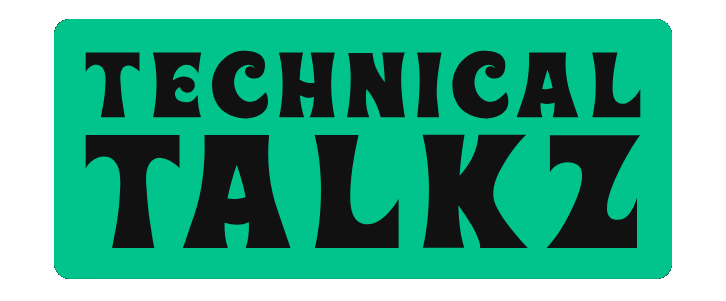In 2025, the ARM versus x86 laptop architecture showdown has reached a boiling point. With advances in ARM-based processors like Apple’s M-series and Qualcomm’s Snapdragon X Elite, consumers now have a genuine option between two rather different computing architectures.
Although x86 (Intel and AMD) continues to dominate many pro and gaming laptops, ARM-powered laptops are becoming steadily more powerful, efficient, and adept at operating desktop-grade software.
So which do you choose in 2025? Let’s examine the differences, advantages, limitations, and real-world performance of ARM versus x86 laptops.
ARM vs x86: What’s the Difference?
x86 is an older CPU architecture designed by Intel and then licensed to AMD. It powers most traditional PCs, offering high performance and broad software support.
ARM (Advanced RISC Machine) is a more power-efficient architecture that was first used in smartphones and tablets. It’s now made available to challenge the laptop space, especially for light, thin, and battery-efficient devices.
⚔️ ARM vs x86 in 2025 – Key ComparisonFeature\tARM (2025)x86 (2025)
Manufacturers\tApple (M3, M4), Qualcomm (Snapdragon X Elite), MediaTek Intel (Meteor Lake), AMD (Ryzen 8040, 9050)
Battery Life\tBetter (15–25 hours)\tAverage (6–12 hours)
Performance(EXCELLENT for productivity & creative apps\tBEST for gaming & old apps
Heat & Noise
Cooler, fanless or quiet
Needs fans when loaded
App Compatibility
Excellent, though apps still unfinished on Windows
Full support
AI Features
Baked-in NPUs for device-level AI
Does the same, with NPUs (Intel AI Boost, AMD Ryzen AI)
Price Range
Competitive, cheaper ARM options in 2025
Broad range, higher variety
OS Compatibility
macOS, Windows on ARM, Chrome OS
Windows, Linux, macOS (partially)
Battery Life & Efficiency: ARM Wins
ARM laptops are renowned for their incredible battery life. In 2025, laptops like:
Apple MacBook Air M3/M4
Microsoft Surface Laptop (Qualcomm Elite)
Samsung Galaxy Book Edge (ARM)
can easily run for 18–25 hours on a battery, making them ideal for remote workers, students, and frequent travelers.
x86 laptops, by contrast—even though more powerful for some tasks—typically do 6–10 hours, unless very underclocked or coupled with large batteries.
⚙️ Performance: It Depends on the WorkloadARM Laptops Excel At:
Productivity (Office, web apps, email)
Content creation (photo/video editing)
AI-assisted workflows
Lightweight development work
x86 Laptops Excel At:
Gaming (because of broader GPU support)
Legacy software (older programs not running natively on ARM)
Professional software (AutoCAD, heavy 3D rendering, etc.)
Custom Linux-based development environments
Thanks to homegrown apps and intelligent chip design, ARM doesn’t feel “underpowered” anymore. Apple’s M3 Pro and Qualcomm’s X Elite compete or surpass mid-range Intel or AMD CPUs in most use cases.
Software Compatibility: Still a Mixed Bag for ARM (Especially on Windows)
Apple was able to successfully port macOS and the majority of major apps to ARM (M-series) without issue, so that everything just works just fine for users. Rosetta 2 still handles legacy x86 apps with virtual-native performance.
Windows on ARM in 2025 is still lagging behind though. While Microsoft has actually thrown its weight behind implementing emulation and native app support:
There are still some specialized software that only runs on x86
Gaming remains a weak area for ARM laptops on Windows
Access and enterprise solution drivers may be limited
If you’re relying on specialty Windows software, x86 is still the better choice.
2025 AI Capabilities: Both Strong, But ARM Leads In A Few
ARM and x86 laptops now both include Neural Processing Units (NPUs) that accelerate on-device AI workloads such as:
Image upscaling
Noise cancellation
Generative AI tools (writing, design, automation)
Voice recognition & real-time translation
But ARM chips—especially Apple’s and Qualcomm’s—are low-power AI-tuned, usually outperforming x86 equivalents in such tasks with greater efficiency of power and less heat production.
Upgradability & Flexibilityx86 laptops usually have SSD and RAM upgrades as an option, so they are more flexible in the long term.
ARM laptops—especially Apple’s MacBooks—are soldered components, limiting possibilities for upgrades and repairs.
If future-proofing by hardware customization is essential, x86 still holds the advantage.
Price & Value in 2025As a result of cutthroat competition, ARM laptops in 2025 are cheaper:
Low-end ARM Windows laptops: ~$600–$900
MacBook Air M3: ~$1,099
Snapdragon Elite laptops: ~$1,200+
x86 laptops still own the low-end and high-end segments, costing between:
~$500 Chromebooks and Windows laptops
~$1,500+ gaming/workstation-class systems
Conclusion: ARM or x86 – Which Should You Choose in 2025?
✅ Use ARM if:
You need longer battery life, improved portability, and silent operation
You use mainstream productivity or creative apps (Office, Adobe, Final Cut, etc.)
You want on-device AI features and future-focused performance
You’re in Apple’s ecosystem or considering Windows on ARM with native support
✅ Choose x86 if:
You run legacy or niche software
You’re into PC gaming or 3D rendering
You want hardware upgradability
You rely on full driver and peripheral compatibility
The good news: ARM and x86 laptops are equally excellent choices in 2025. It really comes down to how you work, what you’re running, and what’s most important to you: performance, battery, flexibility, or compatibility.
Still unsure? See real-world performance benchmarks and user reviews tailored to your workflow before making a final decision.



